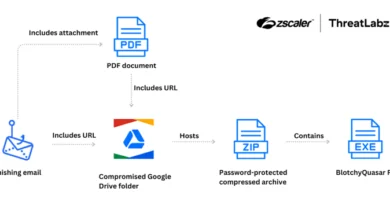Ransomware Protection for Developers: Keep Your Code Safe from Attack

Ransomware attacks are a persistent and evolving threat, capable of crippling businesses by encrypting critical data and demanding hefty payments. While many guides focus on general business protection, developers and their work represent a particularly valuable target. Understanding ransomware protection for developers is crucial not only for individual productivity but for safeguarding intellectual property, maintaining project timelines, and preventing devastating supply chain attacks.
This post dives into the specifics of how ransomware impacts development workflows and outlines actionable steps to secure your code, environments, and pipelines.
[Hint: Insert image/video illustrating locked code or a stressed developer facing a ransom demand screen here]
What is Ransomware and Why Should Developers Care?
At its core, ransomware is malicious software (malware) designed to deny you access to your files or systems. It typically works by encrypting your data, rendering it unreadable without a unique decryption key held by the attackers. A ransom note is then displayed, demanding payment (usually in cryptocurrency) in exchange for the key. Some ransomware variants also practice double extortion, stealing sensitive data before encryption and threatening to leak it publicly if the ransom isn’t paid.
For developers, this threat is acute:
- Codebases Encrypted: Imagine your entire source code repository, including history, becoming inaccessible overnight.
- Development Environments Locked: Local machines, build servers, or testing environments could be compromised, halting all progress.
- Intellectual Property Stolen: Sensitive algorithms, proprietary code, or customer data within development databases could be exfiltrated and leaked.
- CI/CD Pipeline Disruption: Attackers could target build tools or artifact repositories, potentially injecting malware into production releases (a supply chain attack).
Key Strategies for Ransomware Protection for Developers
While general cybersecurity best practices apply, developers need to implement specific measures tailored to their unique workflows and tools. Here’s how to enhance your ransomware protection for developers:
1. Secure Your Development Environment
Your local machine and any virtual environments are prime targets.
- Keep Everything Updated: Regularly patch your operating system, IDEs, compilers, and all development tools. Vulnerabilities are common entry points.
- Use Robust Security Software: Employ endpoint detection and response (EDR) or next-gen antivirus solutions capable of identifying ransomware behavior.
- Least Privilege Principle: Don’t run development tasks with administrative privileges unless absolutely necessary.
- Network Segmentation: Isolate development networks from general corporate networks where possible.
2. Protect Your Code Repositories
Your version control system (VCS) holds your most valuable digital assets.
- Strong Authentication: Enforce multi-factor authentication (MFA) for all VCS accounts (GitHub, GitLab, Bitbucket, etc.).
- Access Control: Regularly review user permissions. Grant access based on necessity.
- Backup Your Repositories: Don’t rely solely on the cloud provider. Implement independent, regular backups of your repositories to a separate, secure location (preferably offline or immutable storage). Test your restore process!
- Scan for Secrets: Use tools to detect accidentally committed API keys, passwords, or other sensitive credentials in your codebase.
[Hint: Insert image showcasing secure repository settings or MFA prompt here]
3. Secure Dependencies and Build Pipelines
The software supply chain is increasingly targeted.
- Dependency Scanning: Integrate tools into your CI/CD pipeline to automatically scan third-party libraries and dependencies for known vulnerabilities (OWASP Dependency-Check, Snyk, Dependabot).
- Use Trusted Sources: Fetch dependencies from reputable package managers and verify signatures where possible.
- Secure Build Servers: Harden the configuration of your build agents and servers. Apply updates promptly and limit their network access.
- Artifact Security: Securely store and manage build artifacts, potentially using signed builds.
4. Implement Immutable and Tested Backups
Backups are your last line of defense. Standard backups can sometimes be encrypted along with source data if connected to the network.
- Follow the 3-2-1 Rule: Keep at least three copies of your data, on two different media types, with one copy off-site (and preferably offline or immutable).
- Focus on Code AND Configuration: Back up not just the code, but also essential configurations for build environments, databases, and infrastructure-as-code setups.
- Test Restorations Regularly: Ensure you can actually restore your development work from backups quickly and effectively. An untested backup is unreliable.
5. Developer Security Awareness Training
Developers are often targeted by sophisticated phishing attacks.
- Recognize Phishing: Train developers to identify suspicious emails, messages on platforms like Slack or Discord, or links, especially those impersonating colleagues or services.
- Secure Coding Practices: While not direct ransomware prevention, writing secure code reduces vulnerabilities that could be exploited as entry points. Learn more about secure coding here.
Responding to a Ransomware Incident
If the worst happens:
- Isolate: Immediately disconnect affected machines or servers from the network to prevent the ransomware from spreading.
- Report: Inform your security team and potentially authorities like CISA (#StopRansomware).
- Do Not Pay (Generally): Paying the ransom doesn’t guarantee data recovery, marks you as a willing payer, and funds criminal activity. Consult with security experts first.
- Restore and Recover: Wipe the affected systems and restore data and code from your clean, verified backups.
- Analyze: Conduct a post-incident analysis to understand how the breach occurred and strengthen defenses.
Conclusion: Proactive Defense is Key
Ransomware poses a significant threat to software development. By implementing robust ransomware protection for developers, focusing on securing environments, code repositories, dependencies, and ensuring reliable backups, you can significantly mitigate the risk. Treat security not as an afterthought, but as an integral part of the development lifecycle to protect your valuable work and contributions.




